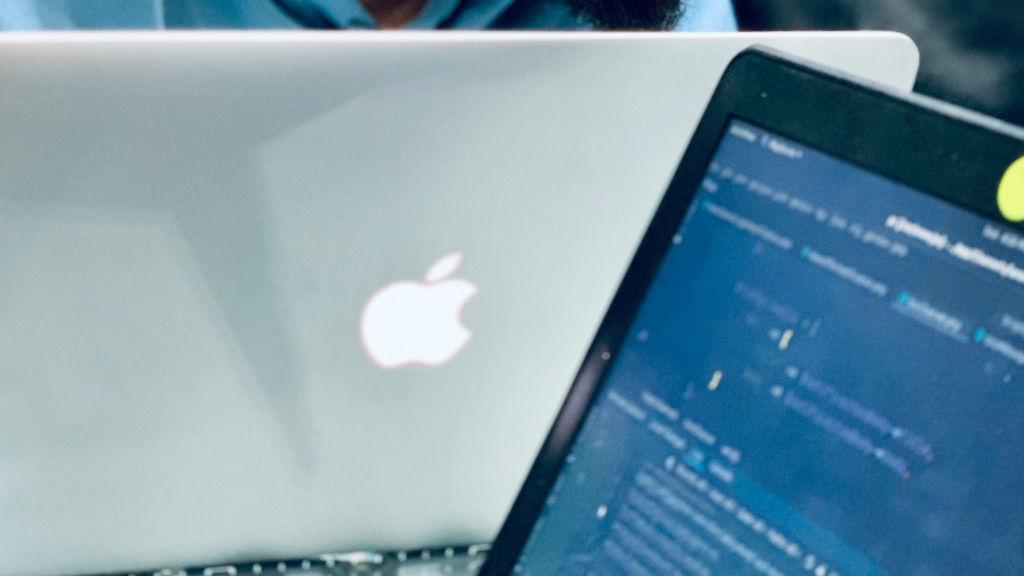Physical Address
304 North Cardinal St.
Dorchester Center, MA 02124
May be something isn’t operating correctly if your Mac boots up slowly or displays error codes. Perhaps things don’t work as they should or apps take a long to launch. It might be that the battery won’t charge or that your computer won’t shut off fully. The majority of those issues, along with other glitches you may have on the Mac, are primarily software-related.

Fortunately, you can typically solve software-based issues on your Mac yourself at no cost. Here is a comprehensive guide that will help you troubleshoot and resolve common macOS issues on your own.
Has an application become unresponsive or frozen? Do you want the beach ball cursor to go away? If this is the case, one of your first actions in macOS troubleshooting should be to force cease troublesome programs.
Click the Apple menu and select Force Quit or use the keyboard shortcut Command + Option + Escape to end an inoperative Mac application. Choose the program you want to stop using and click Force Quit in the box that appears. Check if the problem still exists by opening the app again.
One technique to resolve macOS issues including non-responsive devices and software is restarting your computer.
Go to the Apple menu and select Restart or Shut Down to accomplish this. If it is unresponsive and not responding to clicks, press and hold down the power button for a few seconds to cause your Mac to restart or shut down, clearing the memory and reloading macOS. Make it a routine to restart your Mac once a week or so to keep it operating efficiently.
Having trouble using AirDrop or connecting to the internet?
To obtain the most recent security updates and bug fixes, you must be running the most recent macOS versions and applications.
Choose System Preferences from the Apple menu, click the Software Update button, and then follow the prompts to update the macOS version. Open the App Store and choose Updates from the sidebar to update Mac apps that were installed through the App Store.
Certain macOS issues are linked to a particular user account. Start a new macOS login by selecting System Preferences from the Apple menu in order to isolate a troublesome account.
Does the macOS kernel panicking? Will the display resolution not alter? The time on your Mac appears incorrect? It begins with a question mark (?). It appears to be a configuration issue.
The battery, charging, fans, keyboard and display backlights, MagSafe indication light, and sleep, waking, and hibernation states are all controlled by the System Management Controller (SMC). All Intel Macs that keep various settings including the date and time, audio level, trackpad preferences, and so on in unique memory portions PRAM and NVRAM.
Resetting the SMC may therefore be able to resolve issues such as the battery not charging or the Mac not starting up. Restarting your Mac automatically resets the SMC on Apple silicon Macs.
Use macOS’s Safe Mode to check whether any of the programs that load at startup are causing you difficulties. In essence, Safe Mode is a simplified edition of the macOS operating system. System Preferences > Users > Groups > Login Items does not contain any apps that load in safe mode. Additionally, your Mac will automatically run a fast initial disk check to fix any faulty file systems when it boots up in Safe Mode.
When restarting or powering up an Apple silicon Mac, hold down the power button until the startup choices display in order to enter Safe Mode in macOS.
Now select your startup disk, click Proceed in Safe Mode while holding down the Shift key. When the machine boots up on Intel-based Macs, hold down the Shift key until the Apple logo shows on the screen.
Your Mac may not be responding. Does the start-up process take a long time? If so, there’s a chance the machine’s storage is getting low. Remove unnecessary programs first from your Applications folder. Moreover, remove unnecessary items from the Downloads folder. Next, choose Empty Trash from the menu by Control-clicking the Trash icon on the Dock. Click the Storage tab after selecting About This Mac from the Apple menu to see a breakdown of utilized vs available space.
Click the Manage button in the About This Mac window, then select Optimize Storage to automatically remove outdated television series, movies, and email attachments.
Is your Mac not starting up completely? It sounds like the starting disk could be having issues. However, you’ll need to use Apple’s integrated macOS Recovery partition to run Disk Utility in order to fix it.
The macOS Utilities window ought to be visible. From this point on, you can use Disk Utility, reinstall macOS, restore from a Time Machine backup, or seek internet assistance.
Restarting is your final resort, if everything else fails. Erasing everything removes all malware infestations and provides you with a new start with factory macOS settings. Naturally, you should back up your Mac’s crucial files first using Time Machine or other third-party backup programs.
Click System Preferences from the Apple menu or the Dock to start the factory reset procedure. Select Erase All Content and Settings from the System Preferences menu by pointing your cursor at the menu bar.